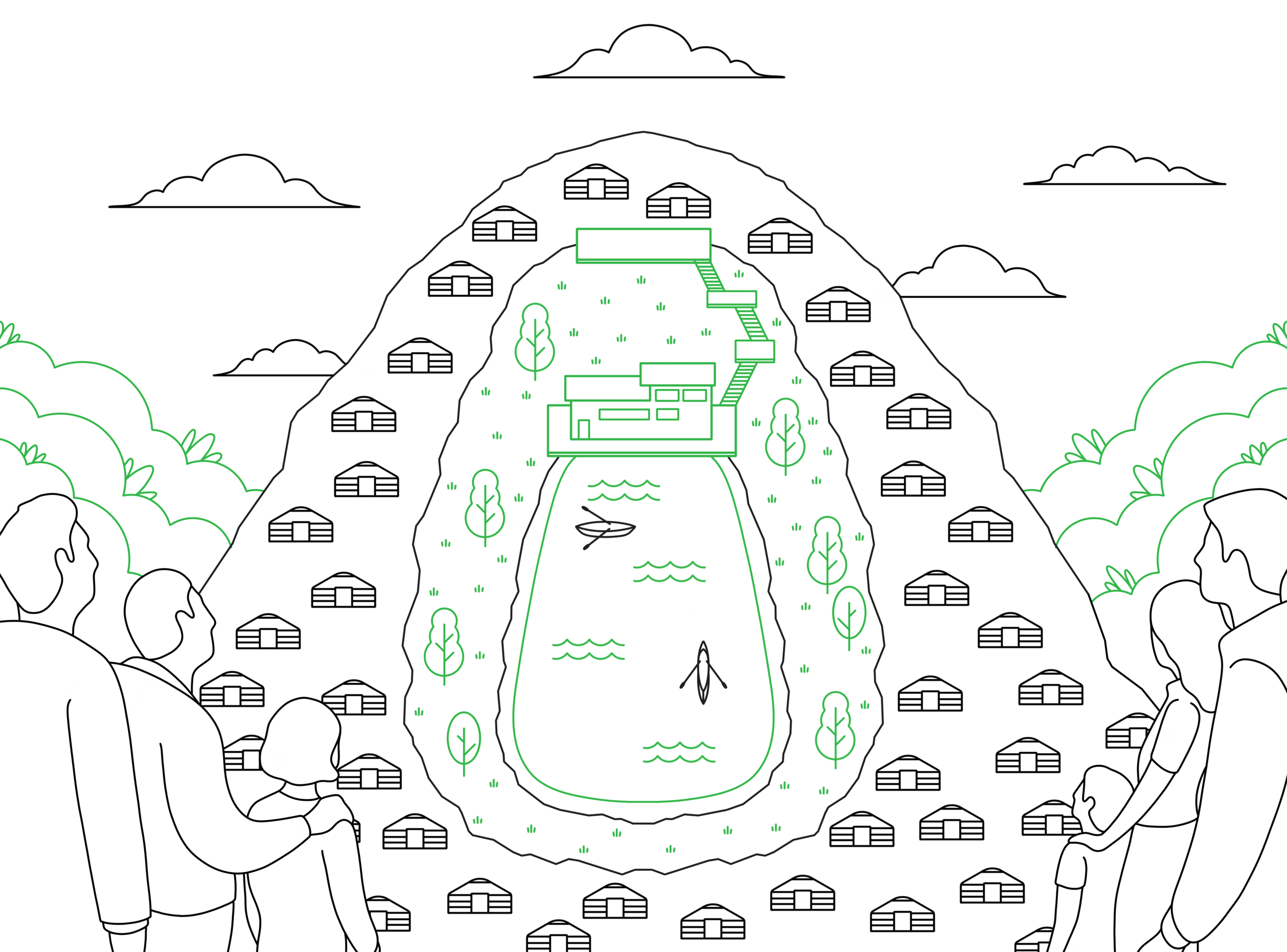For a more accessible Ulaanbaatar
‘Unaa’ means ‘to ride’ in Mongolian. UNAA also stands for the Ulaanbaatar Accessibility Appraisal, a multinational research and idea generating project examining social equity and mobility, exploring access barriers faced by residents of Ulaanbaatar’s Ger areas.
Ulaanbaatar’s Ger areas are home to over half of the city’s 1.5 million residents. As well as lacking in basic transport infrastructure and, in many places, effective urban planning, Ger area residents face the additional challenges of an extreme climate, with winter temperatures regularly plunging to -40 C. Majority of residents do not have cars, and most access tracks are narrow, steep and are unsuitable for upgrading to cater for buses and other public transport services. Many residents have challenges accessing safe and efficient access to the core functions of the city. The aims of UNAA are to understand how Ger area residents travel, to build evidence on the types of access residents face and develop sustainable and resilient approaches to address the discrepancy in levels of access.

The first part is to create a detailed picture of travel behavior and access difficulties experienced by residents in three ger area study sites, using a mixed methods package of travel surveys, GPS data logging, and semi-structured interviews. A section of qualitative research including ethnography, in-depth interviews, social mapping, and tracing of travel experiences will also be conducted in May-September 2020.

The second part of the work consists of a series of community workshops in each district aimed at developing community- engaged solutions to the mobility and access difficulties identified.

Based on the findings of the survey and workshops, we ran route trials in two phases in one of the research sites - Khoroo 31 and 43, Songinokhairkhan District. The trials were to understand the demand and challenges of delivery and support community-led transportation services. The first phase in June 2021 was delivering medical supplies to families in quarantine with the primary health care center. The second phase was in February 2022 delivering coal from designated distribution centers. The project team collaborated with the informal taxi association of the project site on both trials and trained them on open-source mapping, to incorporate technology into communities as one of the solutions to overcome mobility challenges. The trials attracted interest from residents and helped the team to design the next steps of the trial.

Our work is guided by the following key question: ‘How and why do travel patterns and experiences differ across Ulaanbaatar’s communities, and how might community scale difficulties of access and mobility be improved cost- effectively?’
This project is funded by a UCL-GCRF small grant, and brings together a multidisciplinary team of researchers from University College London and the University of Melbourne with community outreach specialists from the Mongolia based NGOs GerHub and Public Lab Mongolia. The work is being conducted in two parts. Initial pilot research was undertaken in one of the sites between 2018-2019. Main survey and qualitativedata collection will be completed by June 2020 with community workshop to be conducted June – October 2020.

Principal Investigator, Spatial Research Lead (UCL Bartlett School of Planning)

Co-Investigator, Qualitative Research Lead (The University of Melbourne)

Associate Researcher (UCL Bartlett School of Planning)
UNAA study explores access barriers faced by residents of Ulaanbaatar’s "ger areas" in three select sites.
As part of UNAA, we have looked into successful community initiatives and solutions to various social problems. What are some transport issues that we can solve as a community?

Accessibility of public transportation by international standards is measured on one’s travels from home to the nearest public transportation within a 500-meter radius.

The concept of a public space is often perceived by many as places that serve people – cafes, movie theaters, and libraries etc. What is a public space?

Grassroots movements and initiatives are becoming more important for Ulaanbaatar (UB) as the city grows and its problems require more collective action.

The living conditions in apartment communities and ger areas in Ulaanbaatar are drastically different.

The construction boom in Ulaanbaatar (UB) has had two sides: it brought development to the city but the drawback has been grabbing public space from local residents.

On December 7th, 2022 GerHub NGO, in collaboration with the Geography Department of the National University of Mongolia and Public Lab Mongolia, held a speaker session that invited Dr. Iqbal Hamiduddin to share the Ulaanbaatar Accessibility Appraisal (UNAA)’s research trial results from their project at the National University of Mongolia.

Iqbal Hamiduddin and Daniel Fitzpatrick discuss the purpose of the UNAA project, and the every day challenges of access and mobility facing ger district residents in this podcast.

Rebekah Plueckhahn reflects on Mongolia before and after Covid-19 using UNAA project research in this online paper.

UCL and GerHub are sharing the preliminary findings about mobility patterns in the Songinokhairkhan District, Ulaanbaatar. The data collection took place on May 20-31, 2019.

Twelve participants, in four teams of three, spent five rigorous days in UNAA Design Studio, facilitated by GerHub.

UNAA project is announcing a five-day design studio for the first time! If you want to help find creative solutions to mobility challenges faced by ger district residents, be a part of our design studio!

GerHub, one of our local partners in Ulaanbaatar, organized innovative community workshops with ger area residents to uncover and understand travel accessibility challenges faced by ger area residents. The participants were limited to khoroo kheseg leaders due to the COVID-19 pandemic restrictions.